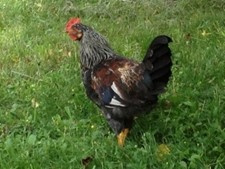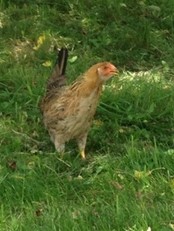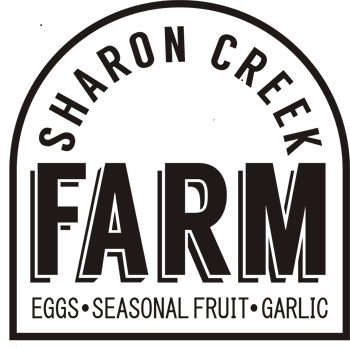The Viking Sagas

Number Two Cockerel
I decided to get day old Icelandic chicks because they are reputed to be good egg layers and foragers. They are a rare breed and I think it is important to maintain genetic diversity. The fact that they are colourful, entertaining and almost feral in their behaviour is just the icing on the Icelandic cake. I was only able to get 5 chicks, one of which died within the first few days. Within a couple of weeks they were regularly escaping the brooder and flying whenever and wherever they could. It was a relief to get them outside into the hoop/duck house.
When they were about 11 weeks old, I could not get them inside the house in the evening to lock up before I went out. The five older hens were safe and secure, but the Icelandics, 3 cockerels and a pullet (not a good ratio) were out on the lam somewhere on the farm. They are impossible to contain with any fencing. I went to sport detection with my dog and lingered, then suddenly remembered on my drive home around 9 pm that I had yet to corral them. I broke all the speed limits on the way home, and jumped out of the truck with a flashlight. It was dusk but not completely dark yet. I could not find them anywhere. I locked the older ladies up for the night and searched the undergrowth with a powerful flashlight. One lone cockerel was waiting outside the hoop house when I got back. I then resigned myself to the fact that they were done for, rationalizing that I could only have one cockerel anyway. The next morning I went down at 6 to let the ladies out and there the 3 missing Icelandics were, looking none the worse for a night outside with all the predators.

Number One Cockerel
I went off to work feeling quite relieved, but still aware of the cockerel over-population problem. Later that morning I got a text message from my daughter’s boyfriend to say that something bad had happened. I could not think of anything, except perhaps my dog escaping again. He told me very apologetically that his dog, a bull mastiff, had cornered the Icelandic chickens and attempted to play with one of the cockerels. The cockerel did not reciprocate and did not survive. My daughter was distraught, but it did go partway to solving the cockerel over population problem.
So now we are down to 2 cockerels and a pullet. I have to decide which cockerel will be dinner. The largest cockerel is stunningly beautiful, with an unusual comb. He struts his stuff with the older hens and over the past few days, I have been observing him gradually ingratiating himself with the hens, escorting them around the farm, finding food for them and putting on courtship displays. He sees them safely into the hen house at night, but they won’t let him in yet, so he follows me back to the duck house and goes inside for the night. Meanwhile, the smaller cockerel has bonded to the single Icelandic pullet and they are inseparable.

Icelandic Pullet
They roam together, sleep together, forage together and have their dust baths together. I could not find him again a couple of nights ago, and she was frantic inside the duck house. It appears that he spent the night in the vegetable garden. I have elected to shelve the life or death decision for now. If the two cockerels don’t fight each other, perhaps I can keep them both!
